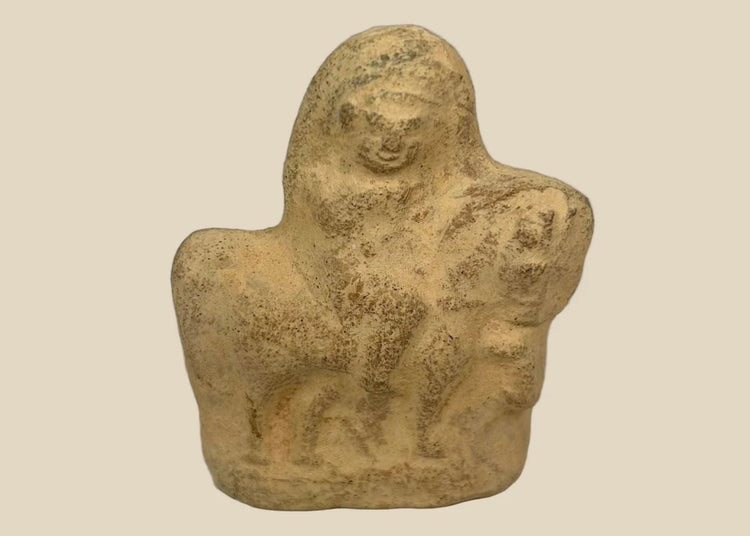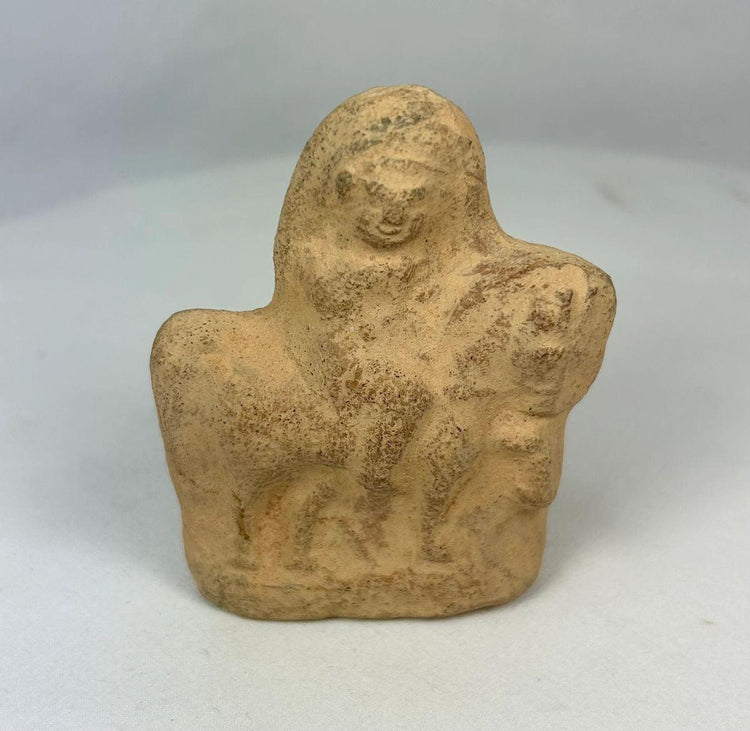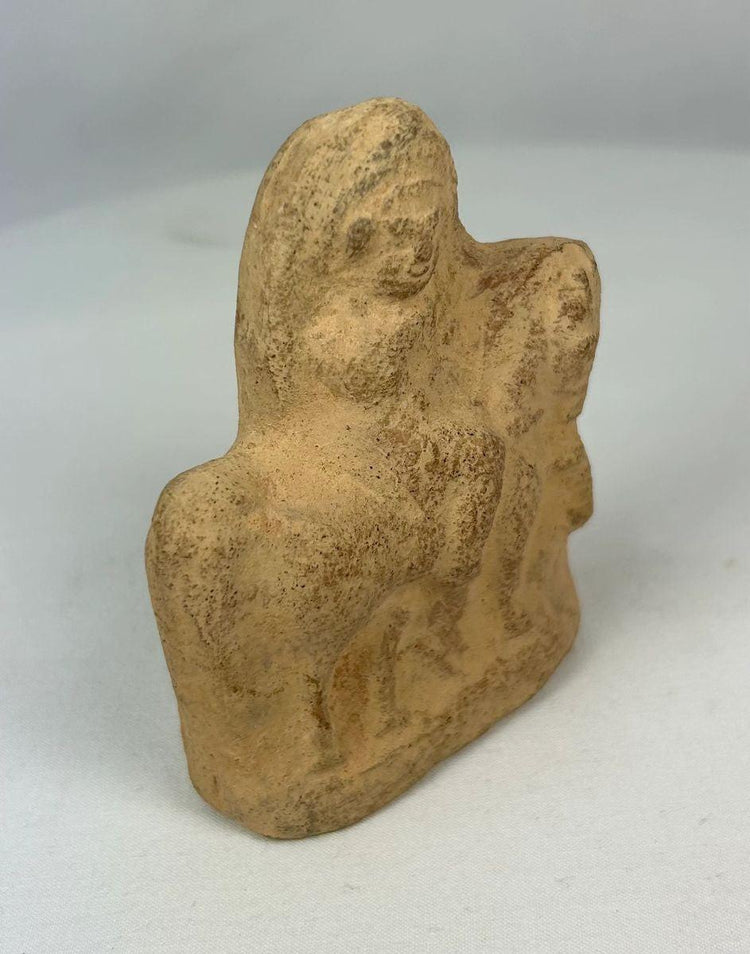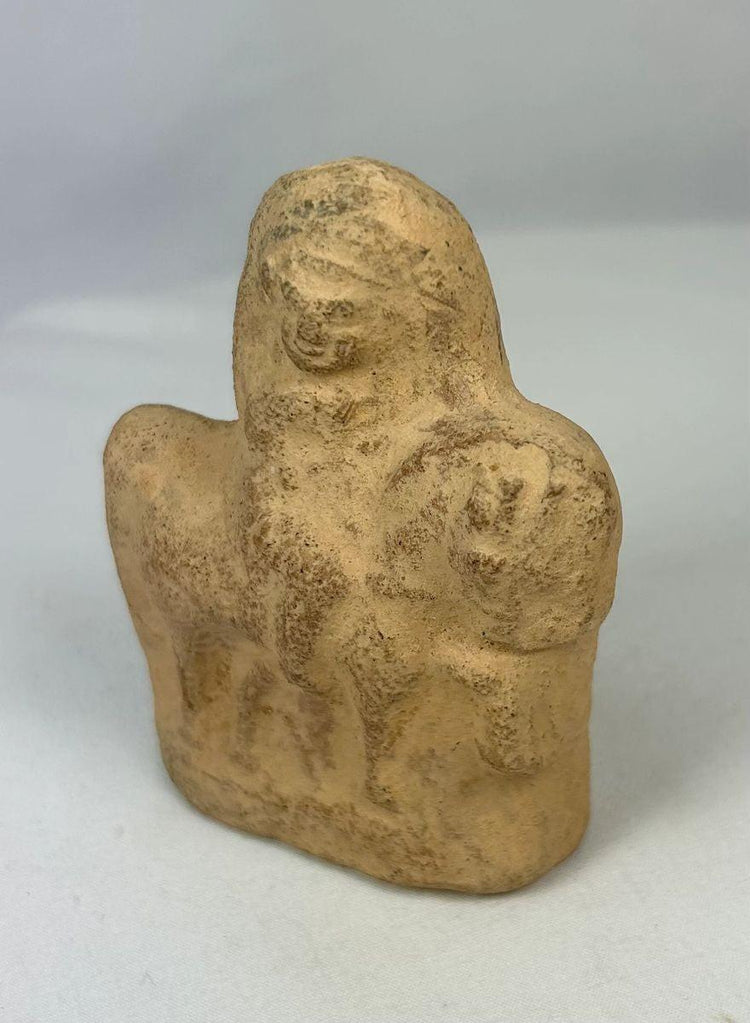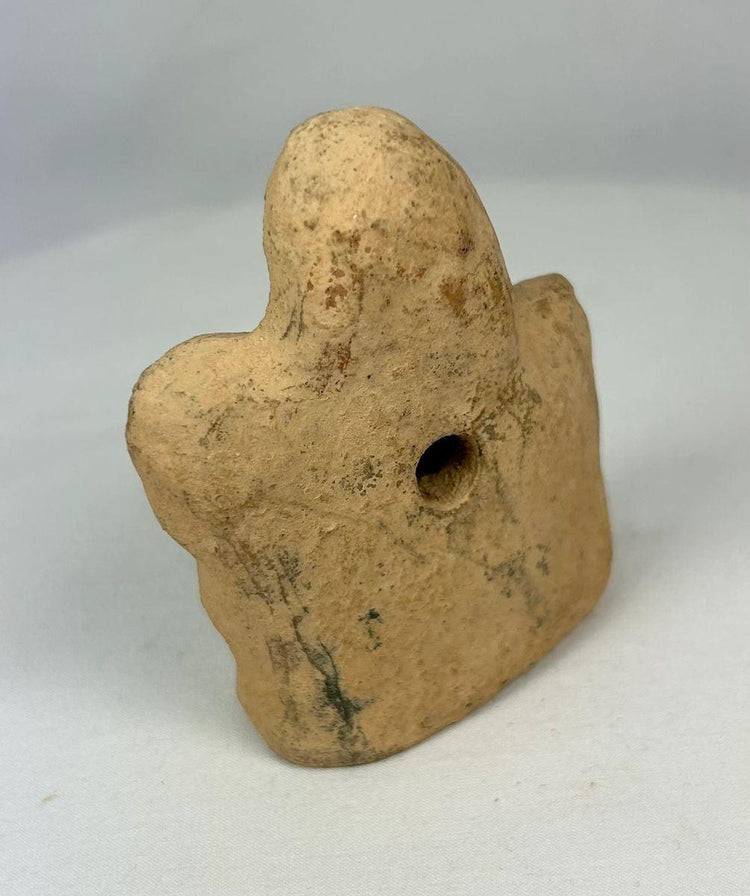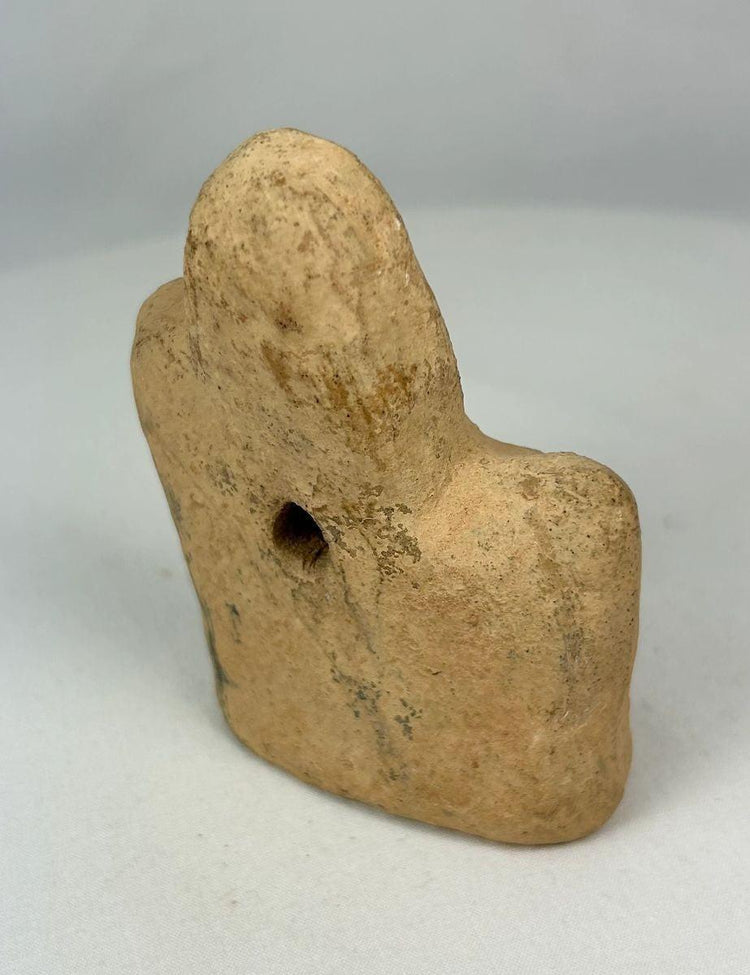Terracotta Figurine of Horse and Rider | Roman Egypt | 1st–3rd Century CE
Description
More
Less
Historical Context & Origin
Region: Roman Egypt
Material: Terracotta
Period: 1st–3rd Century CE
Description
This terracotta figurine of a horse and rider reflects the artistic synthesis of Egyptian and Roman traditions during the period of Roman rule in Egypt. Dating to the 1st–3rd century CE, the piece embodies themes of power, protection, and status, common to both cultures. The rider is shown in a commanding pose, while the horse’s robust proportions emphasize nobility and strength. Despite surface wear over time, the figurine retains traces of detail that attest to its symbolic and artistic significance.
Features
- Horse depicted with strong proportions, symbolizing authority and vitality
- Rider in a seated, commanding pose, emphasizing status and control
- Stylized minimalist representation blending Egyptian and Roman artistic traditions
- Crafted from terracotta, a favored medium for votive, decorative, and domestic ritual objects
- Small perforation on the back, suggesting use in votive or altar contexts
Cultural Significance
Figurines such as this were commonly used in Roman Egypt as symbols of protection, strength, and divine presence. They could serve both decorative and ceremonial purposes, often placed in household shrines or temples. This example highlights the cultural fusion of Roman and Egyptian traditions, where artistic expression carried both aesthetic and spiritual meaning.
Condition
The figurine shows weathering consistent with its age, including chips and fading of details. A natural surface patina enhances its authenticity, and traces of original detailing remain visible.
Dimensions (approximate)
Height: 3.25 in
Age
Circa 1st–3rd Century CE
Learn More
Explore Roman Egypt through The Met — art, culture, daily life, and empire influence revealed
Browse our full collection of authentic artifacts from Egypt’s past
Description
Historical Context & Origin
Region: Roman Egypt
Material: Terracotta
Period: 1st–3rd Century CE
Description
This terracotta figurine of a horse and rider reflects the artistic synthesis of Egyptian and Roman traditions during the period of Roman rule in Egypt. Dating to the 1st–3rd century CE, the piece embodies themes of power, protection, and status, common to both cultures. The rider is shown in a commanding pose, while the horse’s robust proportions emphasize nobility and strength. Despite surface wear over time, the figurine retains traces of detail that attest to its symbolic and artistic significance.
Features
- Horse depicted with strong proportions, symbolizing authority and vitality
- Rider in a seated, commanding pose, emphasizing status and control
- Stylized minimalist representation blending Egyptian and Roman artistic traditions
- Crafted from terracotta, a favored medium for votive, decorative, and domestic ritual objects
- Small perforation on the back, suggesting use in votive or altar contexts
Cultural Significance
Figurines such as this were commonly used in Roman Egypt as symbols of protection, strength, and divine presence. They could serve both decorative and ceremonial purposes, often placed in household shrines or temples. This example highlights the cultural fusion of Roman and Egyptian traditions, where artistic expression carried both aesthetic and spiritual meaning.
Condition
The figurine shows weathering consistent with its age, including chips and fading of details. A natural surface patina enhances its authenticity, and traces of original detailing remain visible.
Dimensions (approximate)
Height: 3.25 in
Age
Circa 1st–3rd Century CE
Learn More
Explore Roman Egypt through The Met — art, culture, daily life, and empire influence revealed
Browse our full collection of authentic artifacts from Egypt’s past
You May Also Like




















